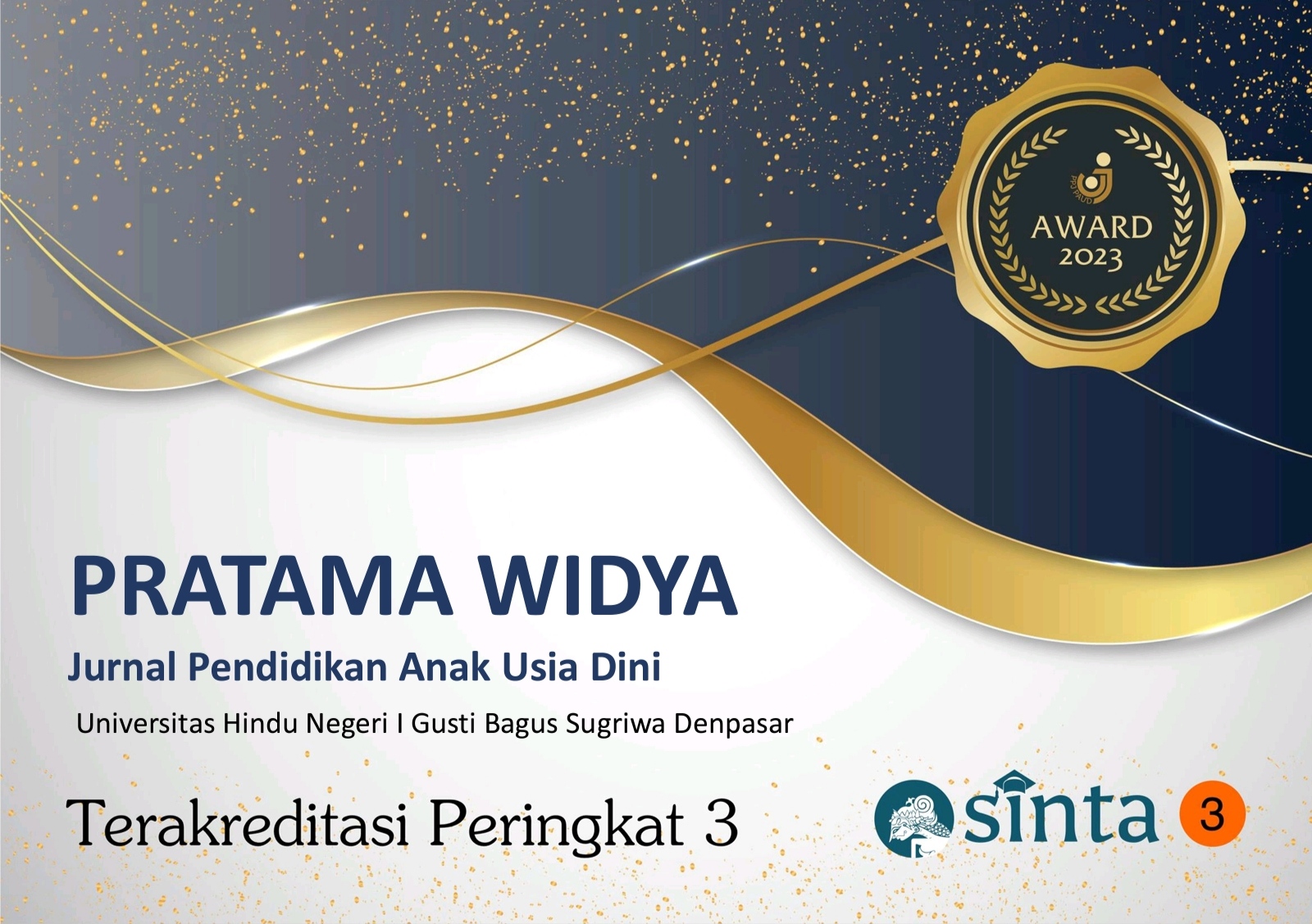COLOR MIXING PLAY TO DEVELOP SCIENCE SKILL FOR YOUNG LEARNERS AT PRATAMA WIDYALAYA KUMARA GIRI KUSUMA
DOI:
https://doi.org/10.25078/pw.v9i2.4183Keywords:
Colour Mix, Science Skill, Young LearnersAbstract
Play is fundamental to early childhood development, offering children valuable opportunities to acquire knowledge and refine various skills. This study examines the effectiveness of color mixing play as a means to enhance science-related skills in young learners. Conducted as Classroom Action Research, it spans two cycles with 21 kindergarten students at Pratama Widyalaya Kumara Giri Kusuma in Jembrana Regency as participants. Data were collected through observation, field notes, and documents and were analyzed using descriptive statistical methods. Results indicate a substantial improvement in active learning engagement, rising from 60.93% in Cycle I (categorized as moderately active/developing) to 90.18% in Cycle II (very active/developing exceptionally well). Correspondingly, the average learning outcomes increased from 74.50 in Cycle I to 85 in Cycle II, with learning mastery rates progressing from 75.5% to 90.4%. These findings highlight that color mixing play effectively supports the development of science skills and serves as a practical, engaging educational strategy in early childhood science education. Beyond science, color mixing play supports growth in other areas, including language, cognitive, physical motor, social-emotional, moral, and artistic development. However, a primary challenge identified was limited playtime, which restricts the extent of skill development. Despite this, the findings suggest that color mixing activities can be a valuable addition to early childhood curricula, providing a fun and interactive way to promote scientific thinking and multi-faceted development in young children.
References
Andrée, M., & Lager-Nyqvist, L. (2013). Spontaneous Play and Imagination in Everyday Science Classroom Practice. Research in Science Education, 43(5). https://doi.org/10.1007/s11165-012-9333-y
Aulinda, I. F. (2020). Menanamkan Budaya Literasi Pada Anak Usia Dini di Era Digital. TEMATIK: Jurnal Pemikiran Dan Penelitian Pendidikan Anak Usia Dini, 6(2), 88. https://doi.org/10.26858/tematik.v6i2.15550
Brown, C. S., Cheddie, T. N., Horry, L. F., & Monk, J. E. (2017). Training to Be an Early Childhood Professional: Teacher Candidates’ Perceptions about Their Education and Training. Journal of Education and Training Studies, 5(6). https://doi.org/10.11114/jets.v5i6.2308
Fyffe, L., Sample, P. L., Lewis, A., Rattenborg, K., & Bundy, A. C. (2024). Entering Kindergarten After Years of Play: A Cross-Case Analysis of School Readiness Following Play-Based Education. Early Childhood Education Journal, 52(1). https://doi.org/10.1007/s10643-022-01428-w
Jopowicz, A., Wiśniowska, J., & Tarnacka, B. (2022). Cognitive and Physical Intervention in Metals’ Dysfunction and Neurodegeneration. In Brain Sciences (Vol. 12, Issue 3). https://doi.org/10.3390/brainsci12030345
Masruroh, S. (2018). Implementasi Nilai Agama dan Moral pada Anak Usia Dini melalui Urutan Wudhu. Golden Age: Jurnal Pendidikan Anak Usia Dini, 2(1). https://doi.org/10.29313/ga.v2i1.3854
Morris, E. (2023). Multiple Intelligences in the Classroom. In Multiple Intelligences in the Classroom. https://doi.org/10.4324/9781315175386
Safitri, R. N. (2020). Exploring Reasons Why Parents Use White Lies to Golden Age Children in Al Ghazaly Kindergarten. ‘Abqari Journal, 23(1), 145–155. https://doi.org/10.33102/abqari.vol23no1.248
Downloads
Published
How to Cite
Issue
Section
License
Copyright (c) 2024 Ni Ketut Srie Kusuma Wardhani, Gusti Ayu Agung Riesa Mahedradhani

This work is licensed under a Creative Commons Attribution-NonCommercial-ShareAlike 4.0 International License.







